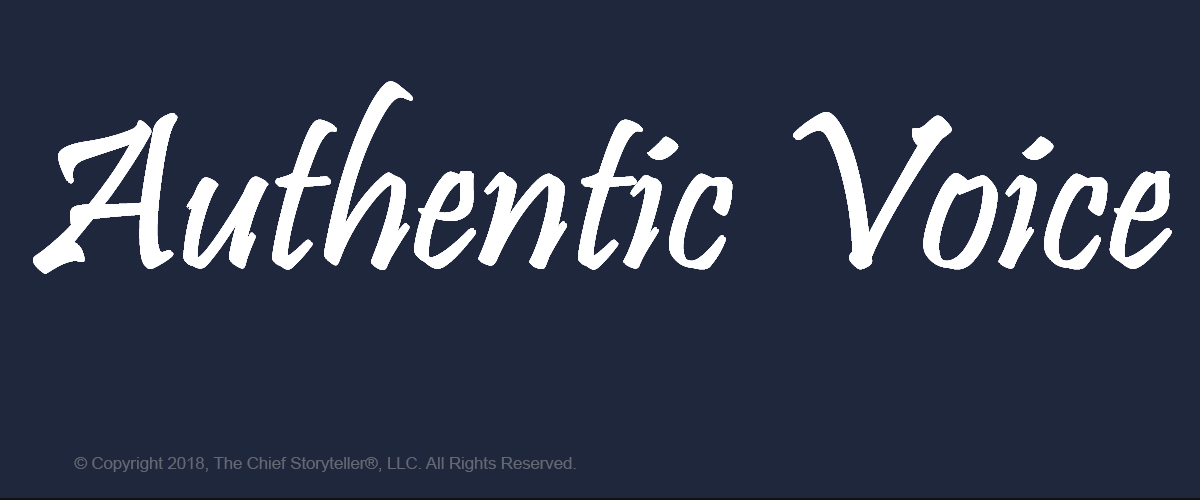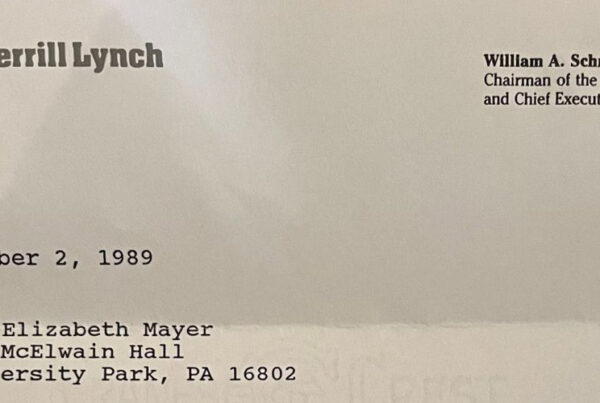
Article Summary: Your authentic voice is not just your internal and external speaking voice. It comes across in all areas of communication, from e-mails to phone messages to body language. People generally have a tuned ear, eye and gut when it comes to discerning a person’s authenticity. It is vitally important to make a great first impression and leave a lasting impression. The conversations you have with yourself can seal the deal or end the relationship. They can motivate, or they can prevent you from reaching your potential. They can inspire or keep you exactly where you are. Authentic voice is a key attribute to building stronger and more profitable business relationships. All things being equal, people want to do business with someone they trust and like.
Keeping it Real – Learn to Heed Your Authentic Voice
Copyright © 2008, Washington Business Journal. Used by permission.
Ira J. Koretsky
September 18, 2008
The conversations you have with yourself can seal the deal or end the relationship. They can motivate, or they can prevent you from reaching your potential. They can inspire, or keep you exactly where you are.
Authentic voice is a key attribute to building stronger and more profitable business relationships. All things being equal, people want to do business with someone they know, like, and trust.
That’s why it is important to find your authentic voice — the one voice that clearly defines what you want, how you will get it, and how you communicate to affect the way others perceive you and your message.
Michael Gelb, author of “How to Think Like Leonardo da Vinci,” says your unconscious database — your authentic voice — is much more influential than you think.
“Brain researchers estimate that your unconscious database outweighs the conscious on an order exceeding 10 million to one,” Gelb says. “This database is the source of your hidden, natural genius. In other words, a part of you is much smarter than you are. The wise people regularly consult that smarter part.”
Your authentic voice is not just your internal and external speaking voice. It comes across in all areas of communication, from e-mails to phone messages to body language.
People generally have a tuned ear, eye, and gut when it comes to discerning a person’s authenticity. It is vitally important to make a great first impression and leave a lasting impression.
Listen to Yourself
Take stock of what you are saying to yourself. Are you full of positive or negative thoughts?
Think about what comes across externally — your reputation, credibility, likability, and communication style. These characteristics affect your ability to close deals, make connections, receive referrals, earn promotions, reach goals, and get people to listen.
The way to fine-tune your authentic voice is to clearly define what you want it to say. Come up with your internal mission statement. Write down exactly who you are. What is your story? What are your goals? What is your passion?
This is a great time to refer back to your business story and your elevator pitch — the 30-second synopsis of who you are and what you do. Is your elevator pitch delivering a compelling message conveying your authentic voice? If not, why? How can you change it?
Have a trusted friend listen as you attend networking events, talk on the phone, and interact with colleagues. Have your friend read some of your materials. The friend should share frank suggestions on how you may be perceived — authentic or not?
Remember, your authentic voice flows out, consciously and unconsciously. More often than not, it is the unconscious that reveals more than sometimes we prefer.
If your authentic voice is constantly saying “It’s just me calling,” or “Gosh, I shouldn’t have said that,” or “I know I should be doing something different,” other people will pick up on your lack of self-confidence.
Head True North
Another step in finding your authentic voice is to think about your True North.
Author Bill George says, “True North is the internal compass that guides us successfully through life. It represents who you are as a human being at your deepest level.”
When you follow your internal compass, your True North will pull you toward the purpose of your leadership.
It will be leadership that is authentic, and people will naturally want to associate with you.
In finding your True North, start with a personal and professional inventory. Ask yourself some key questions:
- If money was not a concern, what would I be doing right now? Tomorrow? In a year?
- What makes me tick?
- What am I passionate about?
- What kind of difference am I trying to make?
Practice what your authentic voice is saying and the message your accompanying body language communicates.
People want to meet and do business with positive, open, friendly people. Positive body language will give you the punctuation on a well-crafted authentic voice.
Get Your Message Across More Consistently
Finally, think about where your authentic voice can take you. You will see a difference when you have the whole package: an authentic voice that is internally supportive and externally confident, a True North that highlights your core values and goals, a communication style that draws people to you and gets them interested in who you are and what you are saying.
Having that identified authentic voice will get your message across more consistently.
You will be able to make better career choices that reflect your personal and professional goals. You will be able to build and maintain stronger and more positive business relationships.
FURTHER READING – ALL WASHINGTON BUSINESS JOURNAL ARTICLES
- Everyone has a Story to Tell, and You Need One Too (read)
- Say What you Want, Say it in Under 30 Seconds (read)
- Step Away from the Urn, and Other Networking Tips (read)
- Keeping it Real – Learn to Heed Your Authentic Voice (read) (this article)
- Getting to Yes – Make Body Language Work for You (read)
- Drop the Dry Presentation, Tell a Compelling Story (Part 1)
- Presenters Must Prepare Like Orchestra Conductors (Part 2)
- Great Leaders Know How to Put their Words to Work (read)
Photography Source: © Copyright 2018, The Chief Storyteller®, LLC. All Rights Reserved.



